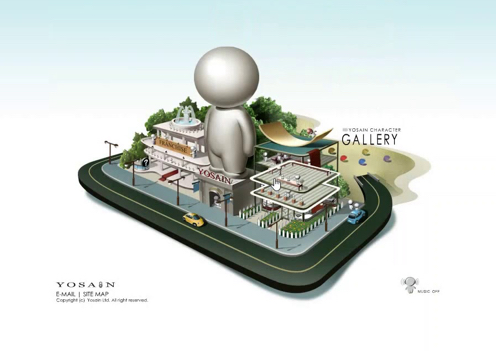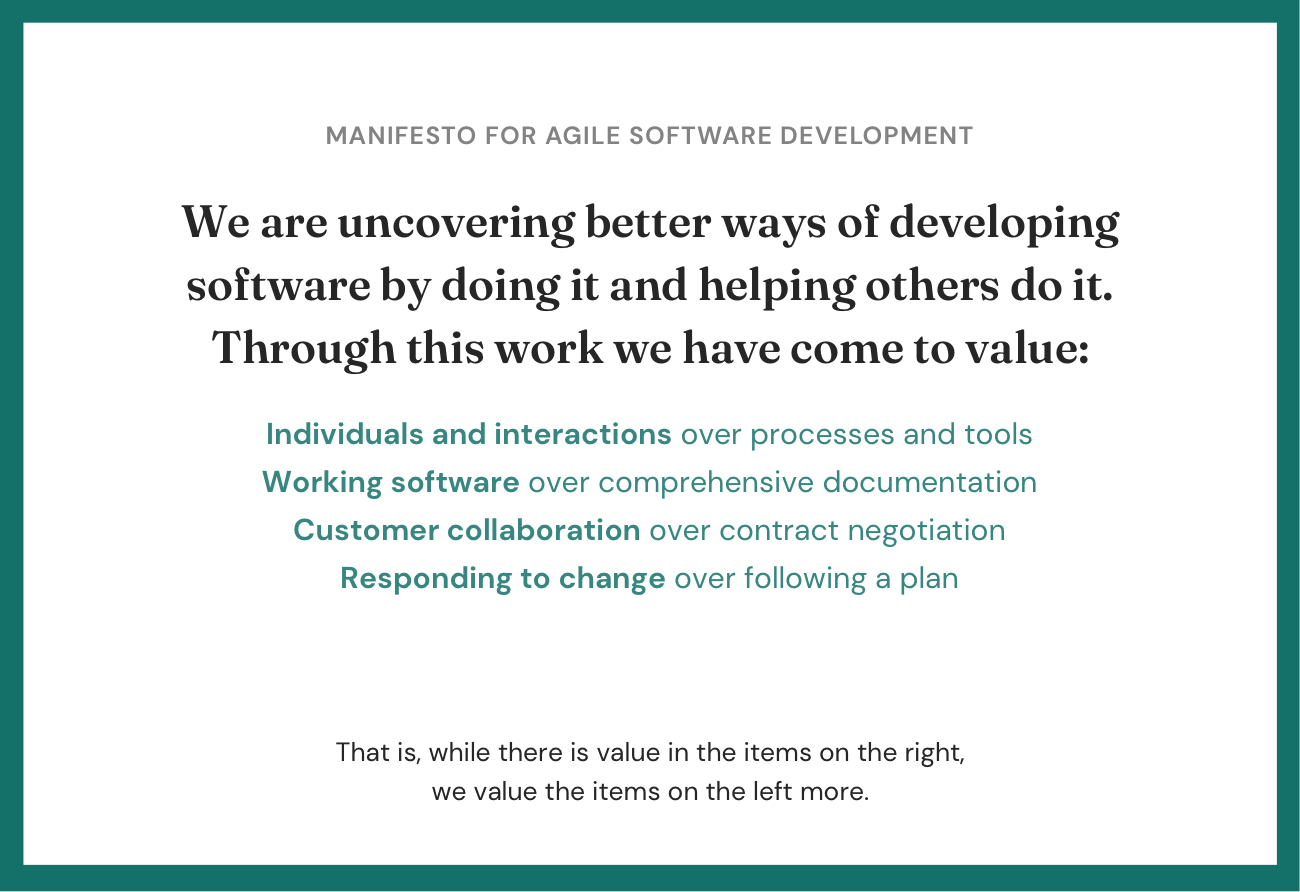What are Government Design Principles, and how they can be universally adopted as code of practice for delivering successful digital projects.

The Government Design Principles (GDP) are best-practice recommendations for government to design, build and buy technology.
Launched in 2012 by the UK Government Digital Services (GDS), it aimed to help its digital teams produce simple, attractive, and practical web services.
It appears the team embraced the principles wholeheartedly, too: the following year, they won the prestigious Design of the Year award for the GOV.UK website adjudged by The Design Museum.
But what are the principles, and how can they help you manage digital projects, design or refresh websites?
This article covers what the GDP are, how we think they both complement and draw a parallel with another set of guiding principles ― the Agile manifesto―, and how we combine both of them to assist us in delivering the important work we do for our clients.
Let’s start with a review of what the principles are.
What are the Government Design Principles?
The GDP were developed out of a need to guide a brand identity for a large number of Agile teams working on centralising the UK Government Digital Services into a single new hub ―GOV.UK
Digital projects of any significant size face problems, overspend, and technical difficulties, to name just two. Plus, the Government’s track record on delivering large-scale digital projects is not always great: those in the private sector can be forgiven for wondering when the next large-scale governmental digital project might fail.
For the launch of its GOV.UK website, GDS requested a set of guiding principles from a trio of creatives, who presented ten fundamental concepts to assist the Agile teams working on the website.
Here they are ―
- 1. Start with user needs
- 2. Do less
- 3. Design with data
- 4. Do the hard work to make it simple
- 5. Iterate. Then iterate again
- 6. This is for everyone
- 7. Understand context
- 8. Build digital services, not websites
- 9. Be consistent, not uniform
- 10. Make things open: it makes things better
The guidelines themselves were not new nor ground breaking. There is a pinch of David Ogilvy, a splash of Jakob Neilson, and, as we’ll see later, a sprinkling of the Agile Manifesto, too. However, when they are collected together in one place, they become incredibly powerful guidelines for undertaking simple to large multi stake holder digital projects and delivering them on spec, time and budget.
The respected technological commentator Tim O’Reilly called them the “most significant piece of UI guidance since Apple in the 80s”.
But why did they need to be said?
If you of a certain age, you may recall the fashion for complex Flash websites in the late 1990s and early 2000s. As designers and coders envisioned what was possible in web design, they produced fantastical websites that were more about displaying technical possibilities than delivering a useable site.
This 2004 offering from Yosain is a prime example. It didn’t matter that it took an age to load and that the user struggled to navigate it. It felt like progress.

Image Source: Web Design Museum
The GDP was a call to make digital services serve the end-user rather than puff the egos of designers and developers.
Let’s take a brief look at each principle in turn.
What Does Each Principle Mean?
1. Start with user needs
Whatever you are creating, it must serve its intended use. So make sure that when you’re designing your next digital service, put any assumptions to one side and talk to users about their requirements first.
2. Do less
Don’t reinvent the wheel. If there is an opportunity to reuse platforms or technology such as APIs or others work, you should do this.
3. Design with data
Analytics are essential in assisting a design process. Make use of existing real-world data to inform your design. The digital service you produce should also have built-in analytics to provide accessible, helpful information for data-driven decision-making.
4. Do the hard work to make it simple
Your digital service needs to achieve more than a simple appearance. The technology underneath your website may be complex, but you should do the hard work to make it simple for your end-users.

5. Iterate. Then iterate again
Launch your digital service quickly as an MVP― Minimum Viable Product. Then build from this base with user testing and feedback to improve your website, adding new features in short sprints. If the MVP isn’t right, don’t worry; shelve it and start from the beginning again.
6. This is for everyone
Consider all of your users. Your website needs to be accessible to even the most technology-shy individual. Don’t create services just for capable web users.
7. Understand context
The designs you produce are not only for how they look on the screen. Real people will use them, on the bus, on their sofas, and in the workplace. Consider the context of how people will use the digital service and design accordingly.
8. Build digital services, not websites.
A digital service responds to user needs and helps them to achieve an aim. Whatever you produce will connect to the real world, so ensure it will help the end-user when designing your service.
9. Be consistent, not uniform
This principle relates to those producing digital services for large organisations. Be consistent and use the same design patterns across all areas of the website where possible. This will help the end-user navigate and utilise the service better.
10. Make things open: it makes things better
An open approach to digital service design produces a better end product, and transparency brings more eyes on problems. Share code with colleagues and let users in on alpha releases to help make progress.
Digital design style guide or work development system?
The GDP is an excellent guide for those whose business is developing websites and digital services. And at Vsourz, we think this greatly complements the AGILE manifesto too.
The Agile Manifesto derived from a meeting of software developers in 2001. Concerned by current management practices for software development, they wanted to formalise a better, ‘lighter’ system, they referred to as Agile.
The meeting at a snowy retreat in Utah resulted in 12 guiding principles. While they don’t have the short, snappy headings of the GDP, there are many similarities between the two.
Of the twelve principles, the ones we feel are closest to the GDP are―
- Our highest priority is to satisfy the customer through early and continuous delivery of valuable software.
- Working software is the primary measure of progress.
- Simplicity―the art of maximising the amount of work not done―is essential.
- Deliver working software frequently, from a couple of weeks to a couple of months, with a preference to the shorter timescale.
The parallels are apparent, and Vsourz considers both sets of guiding principles as valuable instruction for how we approach our work.
How Vsourz uses the GDP and Agile Manifesto to produce outstanding digital services.
Vsourz uses both the GDP and the Agile Manifesto concepts to deliver exceptional digital services to our customers. Here’s how we approach it―
When designing online digital services or other software solutions, we have an end-user focused design process. Your users land on your website looking for answers to a problem they are experiencing.
Whether the problem is wanting a new pair of sneakers or accessing information that helps them complete a task, we’ll first consider the end-user when designing your site.
Another factor affecting usability is accommodating how your users access your website. In 2020, over 52% of internet sessions took place on a smartphone or tablet.
Google now uses the mobile version of your website first for indexing and ranking. So we’ll approach your project with Google in mind as well.
The look of your website is also essential. With the high street in decline, accelerated by the COVID pandemic, your website must stand apart. Cookie-cutter templates, attractive though they may be, aren’t enough today to distinguish you from the competition.
We’ll design you a solution that is attractive, unique, and simple to use.
Another factor important to the end-user is your digital services’ speed. If a website takes more than two seconds to load, research shows it increases the likelihood of your visitors ‘bouncing’ away to find another site.
There are a multitude of factors that contribute to site speed, and we’ve mastered them all. We make sure that our design team and development team are communicating and on the same page so that the result is a website that’s speedy and responsive.
Vsourz has been designing websites for over 15 years. We’ve completed thousands of projects for our customers and offer an end-to-end service you can rely on. Contact us today to find out how we can help you with your next web development project.
Conclusion
The Institute of Directors says ―
“guiding principles ensure that the long-term culture survives and helps the organisation to drive performance, customer, stakeholder, and employee satisfaction.”
The GDP’s guiding principles helped the Government deliver an outstanding, award-winning digital service in a sector usually beset with big-IT problems.
Vsourz applauds the GDP’s message and weaves it together with the Agile Manifesto’s messaging to inform how we work ― each providing a valuable framework for conceiving and delivering digital software solutions.
If you would like to chat some more about your next big digital project, head over to our contact page and leave us a message.







